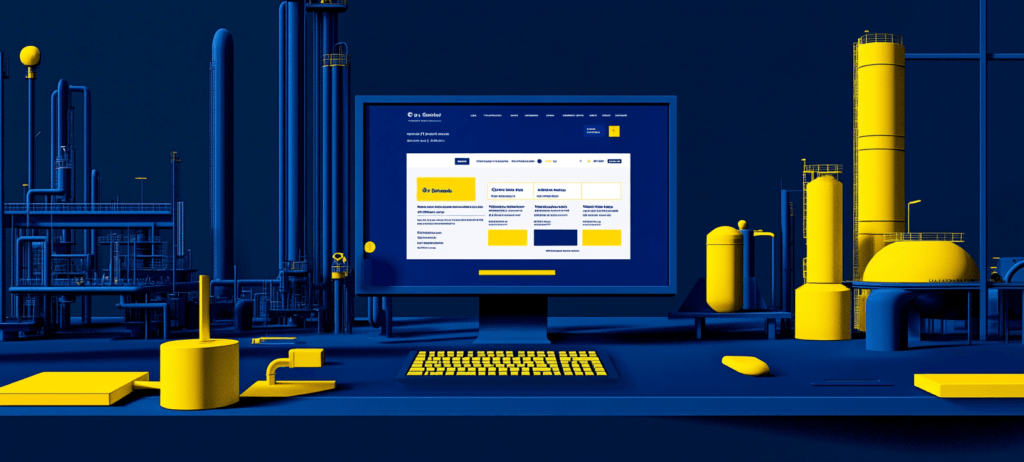-
 6 min. read
6 min. read
-
 Matthew Gibbons
Matthew Gibbons Senior Data & Tech Writer
Senior Data & Tech Writer
- Matthew is a marketing expert focusing on the SEO & martech spaces. He has written over 500 marketing guides and video scripts for the WebFX YouTube channel. When he’s not striving to put out some fresh blog posts and articles, he’s usually fueling his Tolkien obsession or working on miscellaneous creative projects.
Carl, Alex, and Marita are each looking on Google for information about lawn mower maintenance when they see an ad for a lawn mower repair kit. Though Carl sees the ad, he ignores it. Alex clicks on it, but ultimately moves on.
But Marita is intrigued, clicks on the ad, and ends up buying the kit.
Carl, Alex, and Marita exemplify three types of interactions people can have with your paid ads: Impressions, clicks, and conversions. You can benefit from tracking each of those metrics in your paid advertising campaigns.
But what are each of those metrics? What’s the difference between impressions vs. clicks vs. conversions? We’ll explore the answer to that question below, so keep reading to learn more.
Then subscribe to Revenue Weekly, our email newsletter, to have even more marketing info sent right to your inbox!
What are impressions vs. clicks?
Impressions, clicks, and conversions all represent different levels of engagement with your online marketing, like your paid ads.
An impression is when someone sees one of your ads. To be more specific, anytime your ad appears on someone’s screen, that’s an impression.
A click is when someone clicks on one of your ads and is brought to the landing page.
So, if someone sees your ad, that’s an impression. If they see it and click on it, that’s a click.
What is a conversion?
As a bonus, let’s briefly define a conversion, since it’s a strongly related term. A conversion is when someone takes the action you want them to take on your landing page. That might be anything from making a phone call to purchasing a product.
Effectively, the three metrics are different tiers of engagement. Nearly all conversions start with a click, and every click begins with an impression. However, not every impression leads to a click, and not every click leads to a conversion.
Impressions vs. clicks: Why these metrics matter
Measuring impressions and clicks is important for the success of your ad campaigns. Read on for a brief explanation of why!
Impressions
Impressions are important to keep up with because they give you a sense of how large an audience you’re reaching. How many people see your ad? To answer that question, you’ll want to look at impressions.
Impressions are also important for contextualizing your clicks and conversions. Let’s say you earn 10 clicks on one of your ads during a given week. Is ten a lot? Well, it depends on the context.
If you have 20 impressions for that week, that means half of the people who saw your ad clicked on it. That’s really high! On the other hand, if you have 1000 impressions for that week, 10 is incredibly low.
Clicks
Clicks give you insight into how effective your ad copy is. If someone clicks on your ad, it means the ad was compelling enough to draw them in.
Just like impressions, clicks can help add context to your other metrics. If you have lots of impressions but not many clicks, that tells you that you need to spice up your ad copy. Whereas if lots of people are clicking, you know you’ve built a relevant and engaging ad.
How can you track impressions and clicks?
Now that we’ve covered what each metric is, how do you track them?
Generally, the best way to track metrics like impressions, clicks, and conversions is through whatever platform you’re using to run your ad campaigns. So, if you’re using Google Ads, you would use that platform to view engagement metrics and see how users interact with your ads.
That said, there are other tools you can use as well — for example, you could use a tool like Google Analytics to view data about user behavior on your landing pages.
What metrics can you find using impressions and clicks?
Earlier, we talked about how each of these metrics can be used to contextualize the others. However, there’s a bit more to it than that. You can combine these metrics into pairs to create new metrics that give you further insight into your ad performance.
When you compare impressions and clicks, you get a metric called click-through rate (CTR). This measures what percentage of your impressions lead to clicks. A high CTR means most people who see your ads end up clicking on them.
Meanwhile, when you compare clicks and conversions, you get a metric called conversion rate. Conversion rate is a different measurement from conversions. When you measure conversions, you’re looking at the raw number of people who convert.
But conversion rate is the percentage of clicks that lead to conversions. It adds more context to the number of conversions so you understand how effective your landing pages are.
How to improve impressions vs. clicks (and conversions)
To wrap up our look at these engagement metrics, let’s talk briefly about how you can improve each one.
Impressions
If you’re not getting enough impressions, there are a couple of possible reasons why. The first is that you aren’t optimizing your bidding strategy, and Google — or whichever platform you’re using — isn’t showing your ads frequently enough.
The other possibility is that you’re not targeting the right keywords. Maybe your ads show up all the time for the searches you’re targeting, but not many people search for those terms.
In either case, you’ll want to reoptimize your bidding and keyword strategy. You can also check metrics like Ad Rank to see if Google might be restricting your ads based on them not meeting Google’s standards.
Clicks
If you aren’t earning many clicks, that’s a sign that there’s an issue with your ad copy. Maybe it’s not resonating with your target audience. Alternatively, maybe it isn’t optimized for the keywords you’re targeting. If it doesn’t align with search intent, people won’t take an interest in your ad.
To fix this issue, reoptimize your ad copy to be more engaging and relevant to the searches you target.
Conversions
Finally, if you aren’t earning many conversions — but you earn plenty of clicks — that tells you that you should reoptimize your landing pages. Users are interested enough in your ad copy to click. But once they get to the landing page, there’s something that turns them away.
To resolve this, ensure that your landing pages are enticing and compelling. Furthermore, ensure that the landing page content matches the content of the ad itself.
Finally, make sure each landing page contains a single, central call to action (CTA) so that users aren’t confused about what you want them to do.
We foster and form long-term partnerships so that your business has long-term results.
Over 90%
WebFX can drive more impressions, clicks, and conversions for your business
Want some help improving your impressions, clicks, and conversions? There’s no better place to turn than WebFX. With over 1,100 glowing client testimonials, you can rest assured we’re the paid advertising agency you can trust to drive up revenue.
With our pay-per-click (PPC) advertising services, you’ll get help not only improving your engagement metrics, but also lowering your cost per click (CPC) and earning more overall revenue. Furthermore, you’ll receive a dedicated account representative to keep you in the loop about everything we do.
To get started with us, just call 888-601-5359 or contact us online today!
-
 Matthew is a marketing expert focusing on the SEO & martech spaces. He has written over 500 marketing guides and video scripts for the WebFX YouTube channel. When he’s not striving to put out some fresh blog posts and articles, he’s usually fueling his Tolkien obsession or working on miscellaneous creative projects.
Matthew is a marketing expert focusing on the SEO & martech spaces. He has written over 500 marketing guides and video scripts for the WebFX YouTube channel. When he’s not striving to put out some fresh blog posts and articles, he’s usually fueling his Tolkien obsession or working on miscellaneous creative projects. -

WebFX is a full-service marketing agency with 1,100+ client reviews and a 4.9-star rating on Clutch! Find out how our expert team and revenue-accelerating tech can drive results for you! Learn more
Try our free Marketing Calculator
Craft a tailored online marketing strategy! Utilize our free Internet marketing calculator for a custom plan based on your location, reach, timeframe, and budget.
Plan Your Marketing Budget
Table of Contents
- What are impressions vs. clicks?
- Impressions vs. clicks: Why these metrics matter
- How can you track impressions and clicks?
- What metrics can you find using impressions and clicks?
- How to improve impressions vs. clicks (and conversions)
- WebFX can drive more impressions, clicks, and conversions for your business

Proven Marketing Strategies

Proven Marketing Strategies
Try our free Marketing Calculator
Craft a tailored online marketing strategy! Utilize our free Internet marketing calculator for a custom plan based on your location, reach, timeframe, and budget.
Plan Your Marketing Budget
What to read next





